Disclosure: This article contains affiliate links. We may earn a commission from purchases at no extra cost to you, which helps our travel content.
The first time I glimpsed Palau's Rock Islands from the air, I was reminded of emerald jewels scattered across azure velvet—a sight that stirred the same excitement I felt watching my first cricket test match at Eden Gardens. After decades of chasing sporting events across continents, I've developed an appreciation for how landscapes shape cultural identities. Here in Palau, the relationship between the Palauan people and their extraordinary marine environment exemplifies this connection. This past month, I based myself in Airai, Palau's second-largest state on Babeldaob Island, and spent a week navigating the labyrinthine passages between mushroom-shaped limestone islets. What followed was an extraordinary journey through one of our planet's most pristine marine ecosystems—one that demands both respect from visitors and a thoughtful approach to exploration.
Getting Your Bearings: Airai as Your Launchpad
Airai offers a perfect starting point for Rock Islands exploration—less crowded than Koror but with sufficient infrastructure to prepare for your maritime adventures. I stayed at the Airai Water Paradise Hotel, a mid-range option with harbor views that proved invaluable for planning daily excursions.
The Airai State Dock serves as the primary departure point, though I recommend arriving early (before 8 AM) to secure parking. The dock master, a gentleman named Masao, keeps an eagle eye on operations and can offer crucial advice about conditions. He reminded me of the veteran groundskeepers I've interviewed at cricket stadiums—individuals whose intimate knowledge of local conditions is unmatched.
Before setting out, familiarize yourself with Palau's marine protected areas and regulations. The Rock Islands Southern Lagoon is a UNESCO World Heritage site, requiring a permit (available at the dock or in Koror) that costs $50 for a 10-day period. This conservation fee is your contribution to preserving this remarkable ecosystem for future generations.
I found my waterproof map indispensable, as mobile coverage is spotty at best once you're among the islands. Even as someone who has navigated remote rainforests in Costa Rica, I appreciated having physical navigation aids rather than relying solely on technology.
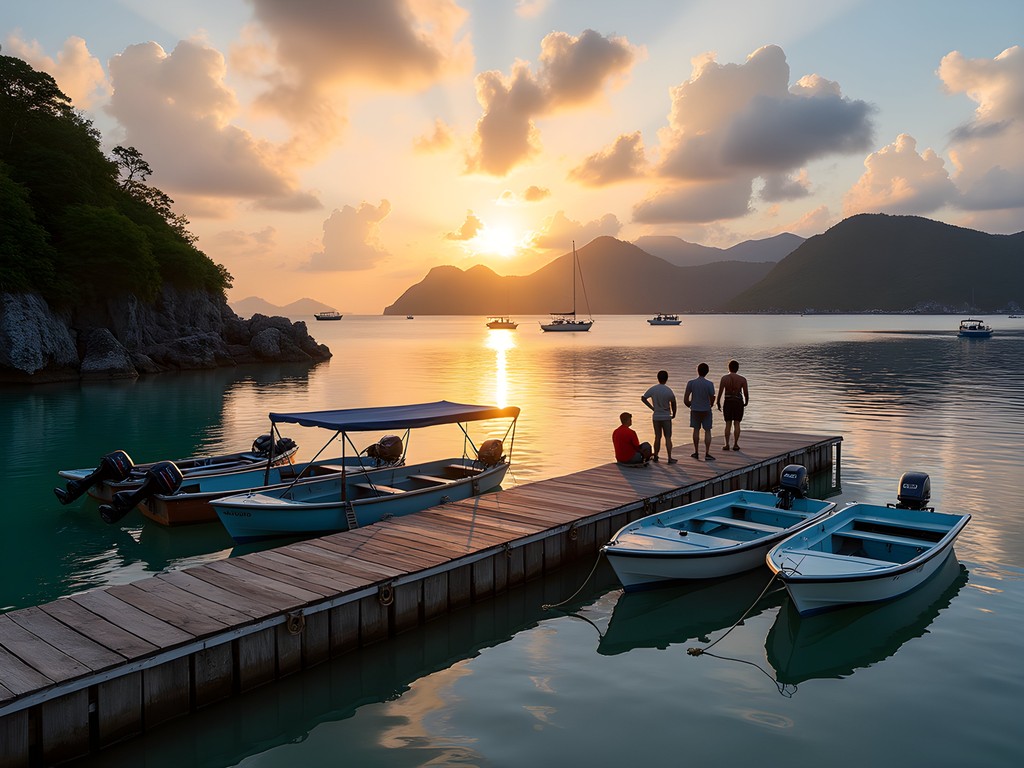
💡 Pro Tips
- Purchase your Rock Islands permit in advance to avoid morning queues
- Register your boat route with the dock master for safety
- Download offline maps as backup for your physical maps
Boat Selection and Rental Considerations
Choosing the right vessel is crucial for navigating Palau's complex marine landscape. For couples seeking flexibility, I recommend renting a small motorboat rather than joining large tour groups. This allows for intimate exploration of hidden lagoons and spontaneous snorkeling stops.
Two rental options stand out in Airai: Sam's Tours and IMPAC Tours, both offering 18-20 foot boats with reliable outboard motors. Expect to pay $150-200 per day plus fuel, which I found reasonable given the freedom it provides. If you're not confident piloting your own boat, hiring a local guide (additional $100-150) is money well spent—their knowledge of tidal patterns and hidden passages is invaluable.
Before accepting any vessel, inspect it thoroughly. Check that the GPS unit is functioning properly, as cellular navigation is unreliable. My unit saved me countless times when passages between islands began looking remarkably similar. Ensure sufficient life jackets, a working radio, and emergency supplies are aboard.
I've learned from my travels that equipment reliability can make or break an expedition. When the motor sputtered briefly near Risong Bay, I was grateful for the maintenance check I'd insisted upon before departure. Like preparing for a multi-day trek in Tasmania's wilderness, meticulous preparation prevents challenging situations from becoming dangerous ones.

💡 Pro Tips
- Request a boat with a canopy for sun protection
- Confirm the fuel gauge works and calculate your range needs
- Test the radio communication before leaving the dock
Navigating the Limestone Labyrinth
Piloting through the Rock Islands presents a fascinating challenge, not unlike reading the subtle variations of a cricket pitch. The waterways between these limestone formations create a natural maze that rewards careful navigation and respect for local conditions.
Tidal awareness is paramount. I learned to plan departures around high tide, particularly when visiting the famous Milky Way lagoon and German Channel. At low tide, coral heads become hazardous obstacles that can damage both boats and fragile marine ecosystems. The tidal range in Palau averages about 1.5 meters, creating significant differences in navigability.
I developed a system of marking my route on my waterproof map as I traveled, noting landmarks and challenging passages. This cricket journalist's habit of detailed note-taking proved valuable when retracing routes. The mushroom-shaped islands begin to look remarkably similar after a few hours on the water.
Weather conditions change rapidly in this part of the Pacific. Each morning, I checked forecasts with almost the same attention I once gave to pitch reports before important matches. The weather radio I brought along provided reliable updates throughout the day, warning of afternoon squalls that frequently develop with little notice.
Palau's conservation efforts mean certain areas have specific navigation rules. The famous Jellyfish Lake, for instance, requires an additional permit and can only be accessed via a designated dock with a short hike. Similarly, some channels are one-way only to prevent boat congestion in narrow passages.

💡 Pro Tips
- Travel with tide tables and plan routes accordingly
- Maintain slower speeds near islands to prevent erosion and wildlife disturbance
- Use polarized sunglasses to better spot underwater hazards
Hidden Lagoons and Secret Beaches
The true magic of self-guided exploration in Palau lies in discovering secluded lagoons and beaches inaccessible to larger tour groups. These hidden sanctuaries offer couples rare moments of solitude in one of Earth's most breathtaking environments.
One particularly memorable discovery came on our third day, when my navigation partner and I noticed a narrow opening in the limestone wall near Ulong Island. Slowing to an idle, we carefully maneuvered through the passage that opened dramatically into a perfect circular lagoon, completely hidden from outside view. The water, an impossible shade of blue-green, hosted a garden of pristine coral that we explored with our snorkel set, which proved far superior to rental equipment I've used elsewhere.
These hidden lagoons often feature their own distinct ecosystems. In one near Risong Bay, I observed behavior among reef fish that reminded me of territorial displays I've witnessed in traditional sports in remote villages—complex interactions following ancient, unwritten rules.
When stopping at beaches, I was careful to practice 'leave no trace' principles, something my wife's conservation work has ingrained in our family. Many beaches in the Rock Islands show remarkably little human impact, and it's our collective responsibility to keep them this way. I carried a small dry bag with essentials, including reef-safe sunscreen to protect both my skin and the fragile marine environment.
For those seeking these hidden spots, I recommend exploring the less-trafficked eastern sides of island clusters, particularly in early morning when the light creates an almost mystical atmosphere as it filters through the dense vegetation crowning each limestone island.
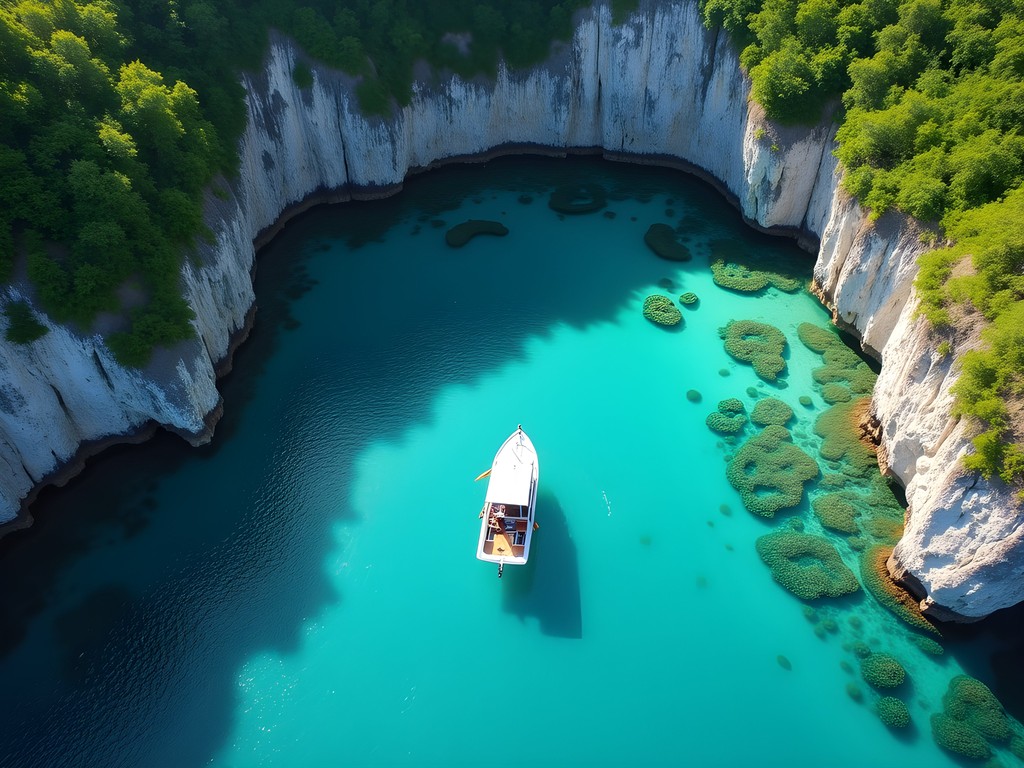
💡 Pro Tips
- Approach hidden passages at idle speed to avoid coral damage
- Pack reef-safe sunscreen to protect marine ecosystems
- Bring a waterproof camera to document underwater discoveries
Cultural Encounters and Responsible Tourism
While the Rock Islands appear uninhabited today, they hold profound cultural significance for Palauans. Throughout my week of exploration, I was conscious of navigating not just a natural wonder but a cultural landscape shaped by centuries of traditional use.
Several islands contain ancient stone monoliths and terraces—remnants of settlements abandoned centuries ago. When I encountered these sites, I approached with the same reverence I would show at a historic cricket ground like Lord's or the Melbourne Cricket Ground. These places tell stories of human ingenuity and adaptation.
On our fifth day, we were fortunate to meet a local fisherman named Tadao near Ngerukewid Islands Wildlife Preserve. He shared stories about traditional fishing practices and navigation techniques passed down through generations. His knowledge of reading water patterns and predicting fish movements reminded me of how indigenous knowledge systems often parallel scientific understanding but emerge from centuries of direct observation.
As visitors to these islands, practicing responsible tourism is non-negotiable. The dry bag I brought proved essential not just for keeping my gear dry but also for packing out all trash. The concept of 'take only photographs, leave only footprints' feels particularly poignant in an ecosystem this pristine.
Palau has pioneered environmental protection in the Pacific, becoming the first nation to create a shark sanctuary and requiring visitors to sign an eco-pledge upon entry. These measures reflect a deep cultural commitment to environmental stewardship that visitors should honor through their actions.

💡 Pro Tips
- Learn about Palauan cultural sites before visiting
- Keep distance from traditional fishing areas out of respect
- Consider donating to local conservation efforts beyond the permit fee
Final Thoughts
As my week of island-hopping drew to a close, I found myself reflecting on the parallels between Palau's Rock Islands and the sporting traditions I've documented throughout my career. Both represent a delicate balance between human interaction and preservation—where appreciation must be tempered with protection. Navigating these limestone wonders by boat offers couples an unparalleled opportunity for connection, not just with each other but with one of our planet's most extraordinary marine landscapes. The effort required to pilot your own vessel through these waters brings rewards that far exceed the convenience of guided tours. As you plan your own Palauan adventure, remember that the privilege of exploring these islands carries the responsibility to preserve them. The Rock Islands have weathered centuries of typhoons and tidal changes; with thoughtful visitors, they will continue to enchant for generations to come.
✨ Key Takeaways
- Renting your own boat provides unmatched flexibility for exploring hidden lagoons
- Proper navigation preparation is essential for safety in the limestone maze
- Early morning departures from Airai offer the best conditions and fewer crowds
- Respecting Palauan cultural sites and marine protection rules enhances the experience
📋 Practical Information
Best Time to Visit
Year-round, with December-April offering calmest waters
Budget Estimate
$200-300 per day including boat rental, fuel, permits and supplies
Recommended Duration
5-7 days
Difficulty Level
Intermediate

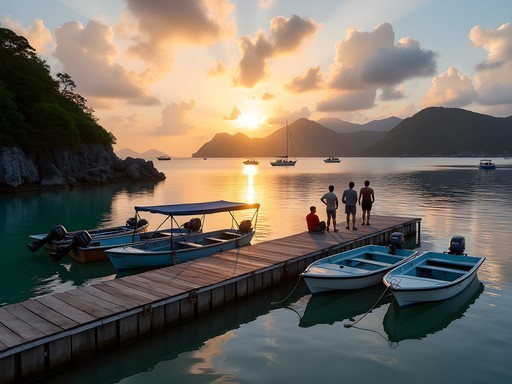
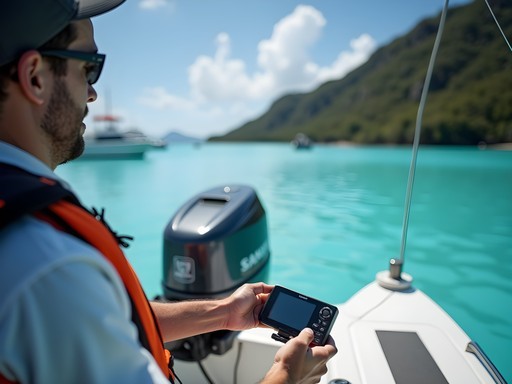

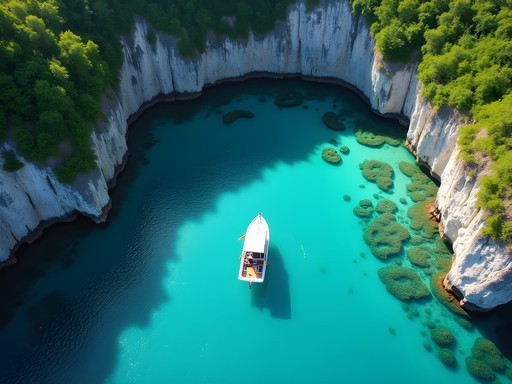











Comments
Casey Andersson
Amit, your comparison of the Rock Islands to emerald jewels is spot on! I visited last year and splurged on a private charter with a local guide named Tino who showed us spots I'm convinced aren't on any map. The limestone formations create these incredible acoustics in some of the hidden lagoons - when you speak, your voice echoes in the most haunting way. For anyone heading there, I recommend bringing a waterproof phone case because you'll want to take photos constantly, even while swimming. Also, the seafood lunch we had on a tiny private beach was perhaps the most memorable meal of my travels. Did you find that some areas were becoming more restricted for conservation? I noticed more markers than when I visited Palau previously.
oceantime
Casey - was Tino the older gentleman with the stories about WWII? If so, we had him too! Absolute legend. Those echoing lagoons were magical.
Casey Andersson
Yes! That's him! His grandfather was apparently there during the occupation. His knowledge of the islands is encyclopedic.
vacationking
Love the cricket references! Going there next month with zero boating experience. Is it really safe for beginners to navigate around the islands? Any rental places you'd specifically recommend?
Amit Sullivan
Thanks! As for boating, I'd recommend starting with a guided tour for your first day to get comfortable with the area. Then try Koror Boat Rentals - they give a thorough orientation and their boats are very beginner-friendly with GPS. Stick to the inner channels on your first solo outing.
vacationking
Perfect advice, thanks! Will definitely start with a guide. So excited!
oceantime
Just got back from Palau last month and this guide would have been so helpful! We rented from a local guy in Airai who gave us a hand-drawn map that was... let's say creative. Got lost twice but found this amazing hidden beach with the bluest water I've ever seen. Pro tip: bring more water than you think you need, especially if you're going to spend a full day exploring. The sun reflects off the water and dehydrates you faster than you realize.
Amit Sullivan
Those hand-drawn maps are part of the charm! Glad you found your way eventually. And yes, hydration is absolutely key - I went through about 3L per day out there.
oceantime
Exactly! Getting a bit lost led to our best discoveries. Did you make it to that tiny cove on the northeast side with the overhanging rock? Incredible spot for snorkeling.
Hunter Thompson
Amit, your cricket reference in the intro made me smile! As a fellow Brit, I get that same rush of excitement discovering new places. I just returned from Palau last month and can confirm your navigation tips are spot on. One thing I'd add about boat selection - we went with a smaller boat thinking it would be more maneuverable, but the water can get choppy between islands. A medium-sized boat with some cover from the sun would've been smarter! That hidden beach near Risong Bay was absolute magic - we snorkeled there and saw the most incredible coral formations. Did you make it to the southern Rock Islands? We ran out of time but locals said that's where the real untouched gems are. Fantastic guide, mate!
Amit Sullivan
Cheers Hunter! Always nice to meet another cricket fan abroad. You're absolutely right about boat size - I should have emphasized that more. And yes, I did make it to the southern islands on day 5 - truly pristine and fewer visitors. Next time rent for an extra day and head south first thing in the morning to beat any tour groups!
tripbackpacker
Great post! I'm planning a trip to Palau in January. How difficult was navigating through the islands yourself? I'm a bit worried about getting lost among all those similar-looking islands. Also, any recommendations on boat rental companies that won't break the bank? I'll be there for about 10 days and want to maximize island exploration time.
Hunter Thompson
Not the author, but I was in Palau last month! Navigation can be tricky - I'd recommend getting a waterproof map and downloading offline maps. For boat rentals, Sam's Tours was reliable but not the cheapest. If you're staying 10 days, see if you can negotiate a weekly rate. The channels between islands can get confusing, but it's part of the adventure!
tripbackpacker
Thanks Hunter! Will check out that map and Sam's Tours. Did you need any special permits for certain areas?
Hunter Thompson
Yes! Don't forget to get the Rock Islands permit - it's $50 for 10 days and covers most areas. Jellyfish Lake needs an additional permit if you want to visit. Worth every penny though!
skylegend
Those Rock Islands look incredible! Adding to my bucket list right now.
hikingway
Wow Amit, your description of the Rock Islands from above is spot on! I visited Palau last year and that first aerial view literally took my breath away. We stayed in Koror rather than Airai though - how did you find Airai as a base? We rented a boat for just one day and I regret not doing more. Those hidden lagoons you mentioned were magical - especially the one with those vibrant blue jellyfish (didn't sting!). Did you need a guide to find the secret beaches or did you discover them yourself?
Amit Sullivan
Thanks hikingway! Airai was perfect as a quieter alternative to Koror, with more local feel but still convenient. For the secret beaches, I had a mix - local recommendations for some, pure exploration for others. The jellyfish lake was incredible, right? Nature's own lava lamp!
hikingway
Exactly! Best natural lava lamp ever 😂 Might try Airai next time for that local vibe.
wanderlustninja
Those limestone formations are insane! Adding this to my bucket list right now!
Sophia Gomez
Amit, your cricket reference made me smile! I was in Palau for a business conference last month and extended my stay specifically to explore the Rock Islands. Coming from Pittsburgh where we have rivers but nothing like this, it was truly transformative. I found myself thinking of my grandfather who taught me to fish - he would have loved the hidden coves. I hired a local guide named Taro who showed me spots tourists rarely see, including a small cave with ancient Palauan paintings. For anyone visiting, I highly recommend connecting with locals rather than just following the standard tours. Their knowledge and stories add so much depth to the experience.
Amit Sullivan
Sophia, that cave with the paintings sounds incredible! I didn't come across that in my explorations. Would love to hear more about where to find Taro for my next visit.
winterwalker
Beautiful post! How's the cell signal out there? Wondering if I need to download offline maps before heading out on the boat or if I can rely on my phone for navigation?
Sophia Gomez
Not Amit, but I was there in September - definitely download offline maps! Cell coverage is spotty at best once you're among the islands. I made the mistake of relying on my phone and ended up having to navigate by sight for part of the day. Beautiful adventure, but a bit stressful!
Venture X
Premium card with 2X miles, $300 travel credit, Priority Pass